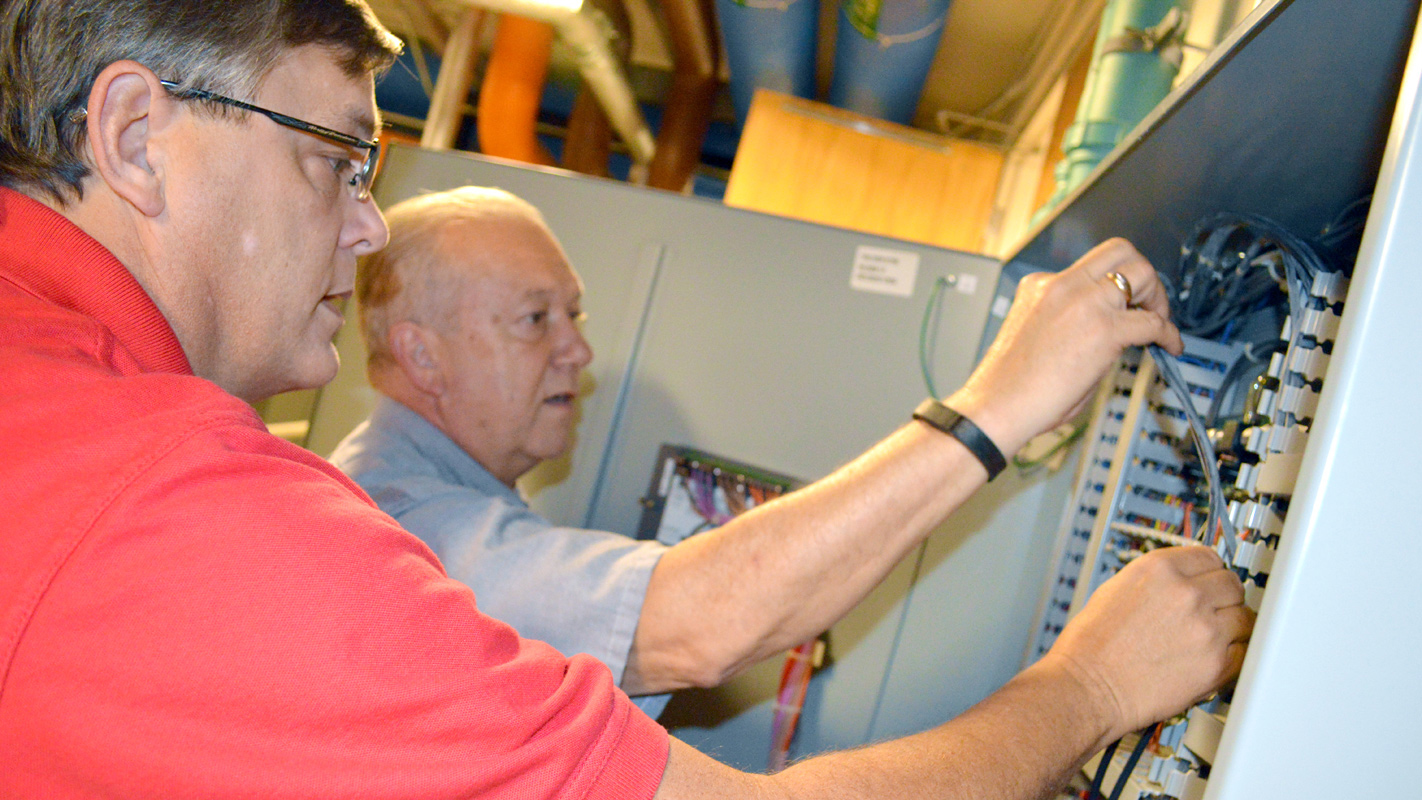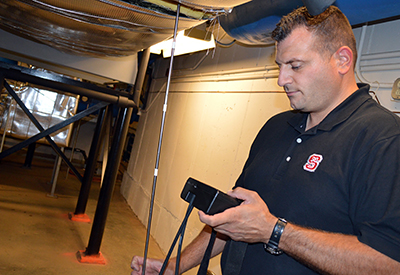It’s not uncommon for the team to work for several months in one building, discovering problems that may have existed since the building was constructed. In one research building, a systemic mechanical problem required redesign and replacement of the entire pumping system.
“Even though we spent a lot of money, it didn’t take long to get that back in energy savings,” Smith says. “Once these problems were fixed, the building performed so much better.”
Payback on recommissioning, including the associated repairs, has averaged less than 18 months with some buildings posting nearly 35 percent reductions in energy use per square foot. And even though the focus is energy savings, water savings typically are an added benefit. While recommissioning one building, a 2,000-gallon-per-day leak in a HVAC cooling tower was discovered and repaired.
“Over time, mechanical systems fail. But because we recommission, we find these problems sooner rather than later,” Smith says.
In order to maximize results, the team strategically selects from buildings that have digitally controlled HVAC systems and above-average energy use. Based on the success so far, the facilities division is looking at ways to increase commissioning team capacity to tackle more of the top priorities within the 350-building campus inventory.
“Those buildings are the biggest bang for the buck,” Smith says. “If we have two buildings with high energy use, we’ll choose the one where energy use is increasing.”
Occupants in the six recommissioned buildings thus far on campus — Leazar Hall, Withers Hall, Mary Anne Fox Teaching Lab, David Clark Labs, Partners II and Engineering Building I — also benefit from improved indoor air quality and temperature control as a result of recommissioning.




